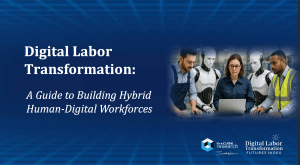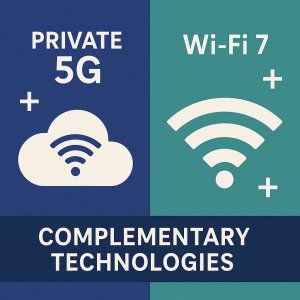In a keynote address at Dell Technologies World on Tuesday, founder and CEO Michael Dell laid out an ambitious vision for a new era of data-driven artificial intelligence—one in which intelligence factories powered by hundreds of thousands of GPUs coexist with sub-200-watt AI PCs at the edge.
From a makeshift “Dell Street” stage meant to evoke Main Street tech adoption, Mr. Dell emphasized that data now sits “at the center of everything, everywhere, all the time,” and insisted that “AI follows the data, not the other way around.” His remarks crystallized Dell’s pivot from traditional hardware vendor to full-stack AI infrastructure provider.
“We store it, protect it, organize it and transform it into actions and insights that drive human progress, turbo-charged by AI,” Mr. Dell said, invoking the company’s four-decade pedigree in servers and storage. “The pace of innovation is at mach three.”
Hyperscale to Micro-Scale
Central to Mr. Dell’s message was the notion of “intelligence factories”—specialized data centers custom–designed to train and serve large language models at hyperscale. One reference deployment features 110,000 liquid-cooled GPUs, 2,800 racks and 100,000 gallons of recirculated water, capable of generating tens of trillions of AI tokens per month. Mr. Dell said plans are already under way for systems that could scale to a million GPUs.
Yet he stressed that most organizations need not build such juggernauts. Instead, Dell is packaging lessons from its largest customers into more accessible offerings: AI-equipped PCs, domain-specific edge controllers and on-premises AI computers. AI isn’t just a product, but it can power your purpose,” he told the audience.
Banking on AI
The keynote also featured a conversation with Larry Feinberg, head of global strategy at JPMorgan Chase, which has worked with Dell for nearly 30 years. Mr. Feinberg underscored that his 84-million-customer bank processes $10 trillion in daily transactions on a private cloud underpinned by Dell hardware.
JPMorgan Chase, which has an annual technology budget greater than $10 billion, has rolled out an in-house large-language model to 200,000 employees for tasks ranging from document summarization to code generation—a move Mr. Feinberg claims “the largest enterprise generative-AI deployment in the world.” He added that the next frontier will be orchestration of autonomous “AI agents,” a development he predicted will place unprecedented burdens on compute infrastructure.
Retail Reinvented
At a mock Lowe’s storefront on the show floor, CEO Samantha Lee described how the home-improvement giant has embedded micro–data centers—PowerEdge servers with NVIDIA GPUs—behind the service desks of its 1,700 stores. The installations run computer-vision algorithms to detect shoppers in need of assistance and dispatch “Uber-style” notifications to store associates equipped with AI-driven companion apps.
A Platform for Every Scale
Dell’s broader infrastructure message covered a familiar suite of offerings—PowerEdge servers, PowerStore and PowerScale storage arrays, PowerFlex software-defined pools and PowerProtect backup appliances—recast through an AI lens. The company also unveiled a version 2.0 of its “Dell AI Factory” built in concert with NVIDIA, featuring 8-GPU Blackwell accelerators, a new rear-door liquid-cooling exchanger and Spectrum-X switches for GPU-scale networking.
With 3,000 customers already running AI factories—and data suggesting that up to 75 percent of enterprises will keep generative-AI workloads on premises within two years—Dell is betting that edge-to-cloud AI will soon be as ubiquitous and essential as electricity.
Looking Ahead
“Modern architecture is not a destination,” Mr. Dell told the audience, “it’s a street of continuous innovation.” As enterprises confront surging data volumes and the promise of autonomous AI agents, Dell aims to supply every rung of the ladder—from trillion-parameter PCs to million-GPU data centers.
Whether that broad portfolio can win over organizations daunted by the costs and complexities of AI remains to be seen. But as the company ventures beyond its traditional hardware roots, one thing is clear: Dell has staked its future on turning data into intelligence at every scale.
TL/DR: Summary of Michael Dell’s 2025 Dell Technologies World Keynote
Setting the Stage: “Dell Street” & The Dell Technologies Way
- Michael Dell opened “Dell Street,” symbolizing where ideas become outcomes, and framed Dell’s mission: to harness data—from students’ classrooms to local businesses—to drive innovation and human progress.
- He emphasized that over 75 percent of enterprise data will soon live and be processed at the edge, and that AI must follow data to remain low-latency, efficient, and decentralized.
Dell’s Vision for Data & AI at Mach 3
- Core Proposition: Dell “stores, protects, organizes, and transforms” data into actionable insights, with AI as the turbo-charger accelerating innovation at unprecedent speeds—“the pace of innovation is at Mach 3.”
- Intelligence Factories: Dell is engineering bespoke, hyperscale AI datacenters—today’s examples run 110,000 GPUs (27,500 nodes, 2,800 racks, 6,000 switches, 100,000 gallons of recirculating water)—and plans exascale builds up to a million GPUs.
Democratizing AI: From Colossus to the Edge
- Not Everyone Needs a Colossus: While hyperscale outfits demand “pure intelligence” factories, most enterprises need “AI–powered purpose”—so Dell is translating learnings from mega-systems into accessible offerings:
- AI PCs & Domain-Specific Edge Models
- Planetary-Scale AI Data Centers
- Tools for Every Size of Business
Customer Spotlights: JPMorgan Chase & Lowe’s
- JPMorgan Chase Use Case (Speaker: Larry Feinberg):
- 84 million retail users, $10 trillion in daily payments, $4 trillion AUM.
- 60,000 technologists, 44,000 engineers, exabyte-scale data, 6,000 apps, $18 billion tech budget.
- Hybrid, multi-cloud architecture with on-prem private cloud for resilience and low latency—Dell hardware underpins GPU clusters for market-risk AI and a 200,000-user LLM suite for summarization, Q&A, co-pilot apps, then AI agents.
- AI use cases span finance-advisor tools, contact-center augmentation, and 20 percent productivity gains in code generation.
- Lowe’s Use Case (Speaker: Samantha Lee):
- 1,700 stores, 300,000 associates in home-improvement retail, with high-value, complex customer projects.
- Modernized digital core: API-first, scale-robust microservices, on-prem micro-data centers with PowerEdge + NVIDIA L4 GPUs in every store for real-time inferencing.
- Generative-AI “companion” app on handheld Zebra devices to equip any associate with product expertise, plus computer-vision for “Uber-style” aisle-help dispatch.
- Shopper-facing AI portal (lowe.com/ai) delivers tailored recommendations for home-improvement decisions.
The “Modern Architecture” Platform
- PCs → AI Workstations:
- Windows 11 AI PC refresh; Dell leads commercial AI-PC market, offering choices across NVIDIA, Intel, AMD, Qualcomm NPUs/GPUs.
- Dell Pro Max with Blackwell-based RTX 6000 delivers 20 petaflops and 800 GB memory—enough for 1 trillion-parameter models at the desk.
- Data Center Reinvention:
- Disaggregated Architecture: Open pools of compute, storage, networking for any workload—mix of hyper-converged ease + three-tier flexibility.
- PowerEdge 17G Servers: 7:1 density uplift, automated management, making room for AI expansion.
- Networking: High-speed Dell Networking + NVIDIA switches for GPU-hungry traffic.
- Storage:
- PowerStore: AI-driven all-flash with industry-leading dedupe (8 exabytes saved).
- PowerScale: Scale-out file/object for unstructured AI data.
- PowerFlex: Software-defined scale for mixed workloads.
- PowerProtect: Cyber-resilient backup/recovery with dedupe and immutability.
- Consumption: Dell Apex subscription models and global supply-chain resilience from design through support.
The Dell AI Factory 2.0 (with NVIDIA)
- Compute Engines:
- PowerEdge XE9780 L/5L chassis with 8× Blackwell B300 GPUs; 4× faster training, 11× inferencing speed, direct-liquid cooling, up to 256 GPUs/rack.
- RTX Pro 6000 servers for agentic AI (robotics, digital twins) with 8 GPUs in a desktop form factor.
- Thermal Innovations: Enclosed rear-door heat exchanger captures 100 percent of rack heat; saves up to 60 percent on cooling.
- Networking: New NVIDIA Spectrum-X switches in Dell PowerSwitch line for converged GPU fabrics.
- Storage & Data Pipelines:
- Project Lightning: Next-gen parallel filesystem with 2× throughput vs. rivals, supporting hundreds of thousands of GPUs.
- Dell ObjectScale: Petabyte-scale object store with real-time streaming.
- Distributed Inference: 100× more tokens/sec, 80 percent lower latency—critical for multi-agent, reasoning workloads.
- Managed Services: “Easy button” for AI lifecycle orchestration—training, deployment, and management.
The Path to “Ubiquitous Intelligence”
- Economic Imperative: AI to add $15 trillion to global GDP by 2030; enterprises investing $1 trillion+ in AI infrastructure.
- Adoption Trend: 85 percent of enterprises plan on-prem generative-AI in next 24 months.
- Ecosystem & Access: Partnerships across Microsoft, Meta (Llama), Hugging Face, Red Hat, Cohere, Google (Gemini on-prem) ensure a broad palette of models and tools.
- Vision: From 3,000 Dell AI factories today to millions—driving a new “intelligence explosion” where AI agents become the digital workforce.
7. Responsible Innovation & Sustainability
- Energy & Emissions: Telemetry-driven power/thermal management, liquid-cooled designs, renewable energy sourcing, net-zero ambitions for new HQ.
- Circularity: Asset-recovery programs to reclaim parts from retired systems while refreshing 1.5 million PCs.
Closing Thought:
Michael Dell framed AI not as a futuristic novelty but as an essential “utility”—as ubiquitous as electricity—that will amplify human ingenuity. By uniting hyperscale expertise with edge-to-cloud accessibility, Dell aims to enable every organization—whether a Fortune 50 bank, a home-improvement retailer, or a startup conversational-robot venture—to harness AI for its unique purpose, at any scale, responsibly and sustainably.
“AI is the operating system that will power the world forward—helping enterprises think faster, act smarter, and dream bigger.”


